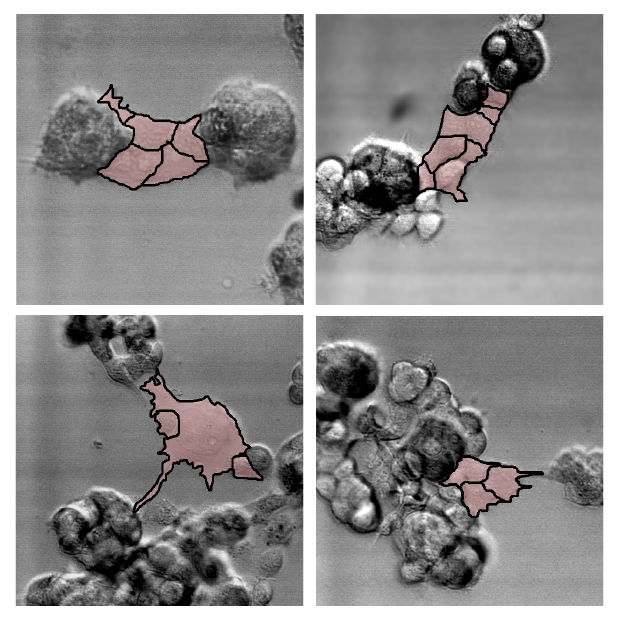How Tumors Form: Univeristy Of Iowa Researchers Record How Tumors Grow In Real Time, 3D For First Time

Though we’ve known about cancer since as far back as 3000 B.C., how mutated cancer cells grow into full-on tumors has largely remained a mystery — until now. Researchers from the University of Iowa (UI) claim to be the first to have 3D video proof of how a tumor moves and grows in real time.
The study, which was published in the American Journal of Cancer Research, looked at a type of cancerous stem cell known as a tumorigenic cell, and aimed to show how it works in real time. Their video showed how the tumorigenic cells, whose sole purpose is to form tumors, built a so-called bridge to “recruit” both healthy and cancerous cells. These newly recruited cells were then absorbed into the parent cells, which then helped to slowly grow the tumor (this process by which parent cells merge to form a daughter cell is called coalescence). They also found only 5 percent of all tumorigenic cells are necessary to start this tumor creation process.
“It’s not like things sticking to each other,” said corresponding author David Soll, biology professor at UI, in a press release. “It’s that these cells go out and actively recruit. It’s complicated stuff, and it’s not passive. No one had a clue that there were specialized cells in this process, and that it’s a small number that pulls all the rest in.”
The study builds on previous research from Soll and his team, which showed how tumorigenic cells from specific cancers, like that of the lungs, skin, brain, and breast actively reach out to other cells and ensnare them to build tumors. They actually watched as these cells extended themselves away from the tumor cluster to catch other cells, and drag them into the tumor, adding to the overall mass.
The current study, meanwhile, involved comparing the actions of breast cancer cells engineered to move faster and be more tumorigenic to those of parent breast cancer cells, as well as healthy ones. Over a 50-hour period, the breast cancer cells grew more in density than their parent breast cancer cells as the tumorigenic cells recruited others to join the tumor.
Despite their findings, the researchers are still unsure about why these cells recruit other cells in the first place. Soll suggested they might be reverting to their primitive function of creating tissue to develop embryos. However, because they’re mutated stem cells, they instead create a self-sustaining microenvironment in which tumors can thrive and expand. Or, as Soll suggests, there may be a more cynical reason behind the cellular activity: it may be the tumor’s way of building a defense against the body’s efforts to destroy it.
Knowing how fast these cells move can help scientists determine how quickly tumors form. Even though all cancers grow at different speeds, knowing this can help doctors bypass the “wait and see” method, which increases the risk of a tumor becoming too big. In addition, knowing which cells are tumorigenic will give scientists targets for testing antibodies — which fight cancer by blocking its growth signals and coaxing the immune system to act — as well as radiation and chemotherapy treatments.
Doctors currently prevent the growth of tumors by introducing specific proteins into the body, cutting off the tumor’s supply of blood (which it needs for energy), and increasing aspirin intake, among other methods. However, if doctors can determine how tumors grow in the first place, they’ll be able to prevent it entirely, thus taking a huge step forward in the fight to eradicate the disease altogether.
Source: Soll D, et al. Mediated coalescence: a possible mechanism for tumor cellular heterogeneity. American Journal of Cancer Research. 2016.
Published by Medicaldaily.com



























